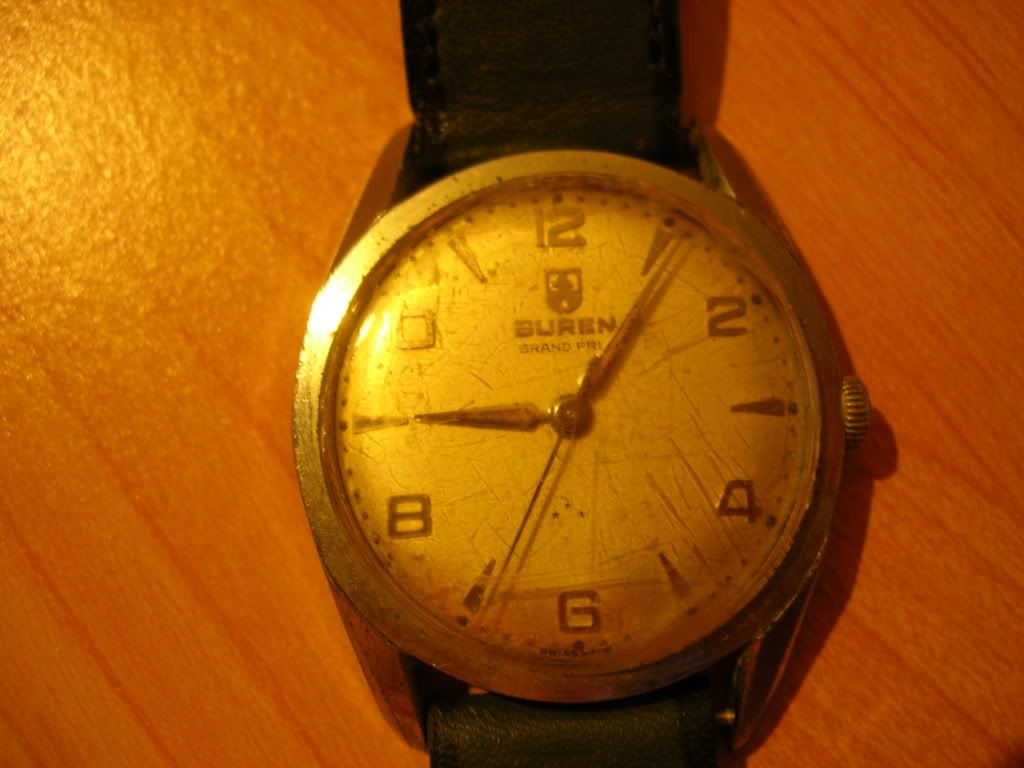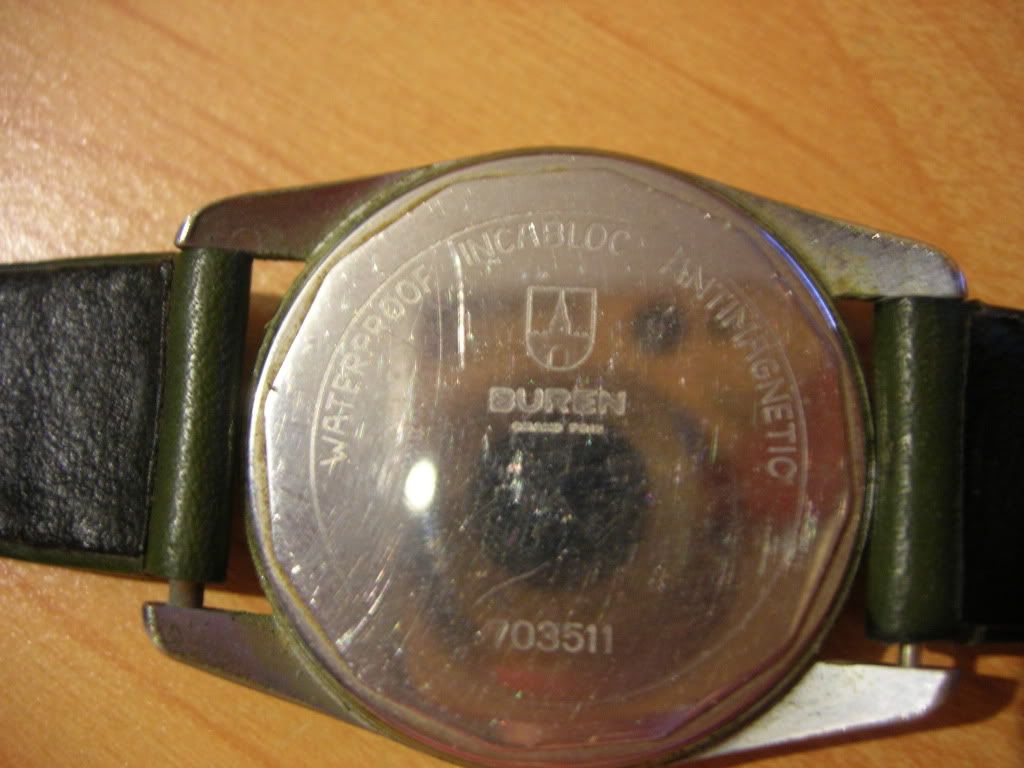hcptdg Schreef:
Zal best echt zijn maar gelet op de staat zal de
waarde laag zijn. Pakweg 100 Euro als je er een
klusser voor vindt.
Pfff dat vind ik erg optimistisch voor een Incabloc uurwerkje in deze staat.De fabriek is in 1972 failliet gegaan. Ik denk dat het horloge uit de jaren 60 komt. Ik hoop dat je Engels kunt lezen hier is wat info over het merk.
Büren Watch
Founded 1873 in Büren, a medieval little town at the river Aare in Switzerland, by Fritz Suter-Antenen. Suter-Antenen produced pocket watches, first with cilinder escapement, after 1885 with Anker escapement, winding with key.
1898 H. Williamson Ltd. London bought the label and the factory, increasing the production of pocket watches in many calibres, all manufactured completely inhouse. From 1916 to 1923 a kind of interchangeable parts for the different calibres were developed. In 1925 a patent for the stones used as bearings was granted, these stones being pressed into their place, as applied today in every watch.
Between 1925 and 1930 a broad set of pocket and wrist watches was developed (calibres 373, 25, 335, 385, 375, 378, 875, 415, 400 tonneau, 975, 460, 461, 462, 293 and 70). Annual production in Büren was about 200’000 time-pieces.
The crisis after 1929 forced Williamson Ltd. to sell the facilities in Büren to a local group of new shareholders and the swiss-american financier Roland Gsell.
From 1932 onwards the „Buren Watch Company S.A.“ developed rapidly new wrist watch calibres ( no. 40, 45, 35, 60, 295, 350, 50, 356, 14, 370, 410, 380, 462, 30 and 565). Buren participated in the race to ever flatter watches, e.g. by the calibre 300, 280 (very flat with 2,8 mm, and acclaimed as very precise, in 1960), and cal. 65 for flat women watches. All parts were still manufactured inhouse. 1945/6 the fabrication of cal. 525 was started, an automatic bumper movement watch, in 1953 the automatic calibres 535-539 with „Rotowind“(with second hand from center, or power reserve indication).
1954 Buren established the patent for its Minirotor – the small rotor integrated at the same level as the rest of the movement, which can thus get very flat. The watch was called „Superslender“ (calibres 1000 and 1001 and produced from 1957 onwards), then adapted to „Intramatic“(cal. 1280, 1281, 1320 and 1321) and „Slendermatic“for women. The patent for Superslender was licensed – together with Universal of Geneva to other firms, eg. Complication-Piaget or IWC, the patent for Intramatic was licensed to Baume & Mercier, Bulova and Hamilton (used in the “Thin-O-Matic” line).
The automatic mouvements were further developed, together with Breitling, Heuer-Leonidas and Dubois Depraz, to build the world‘s first automatic chronograph in 1969 (cal. 11 „Chronomatic“), where the crown (seldom to use in an automatic watch) was set at the left of the dial, the two chronograph push-pieces at the right side. In 1966 the swiss-american owner Gsell wanted to retire and engineered the aquisition of Buren by the Hamilton Watch Company (USA). Hamilton transferred its production 1969 to Büren, doubling its capacity to about half a million pieces. But the markets for Buren-Hamilton watches suddenly shrank, 1972 the factory was liquidated.
Source: Hans Kocher-Aeschbacher, „Die Geschichte der Uhrmacherei in Büren“, ed. Callwey, 1992, Munich, Büren (Kocher was the last director of Buren watch).
Thanks to Beat Kappeler (Switzerland) for this history.
Gewoon lekker houden het heeft denk ik meer sentimentele waarde dan geldwaarde.

